-
#529 – Evil Bong 888: Infinity High (2022)










Evil Bong 888: Infinity High (2022)
Film review #529
Director: Charles Band
SYNOPSIS: Rabbit has opened up a new restaurant to try and go legit after his many weed-related adventures, with the evil bong, Ebee, working in the kitchen. However, many mishaps ensue, and tempt Rabbit to return to his old ways…
THOUGHTS/ANALYSIS: Evil Bong 888: Infinity High is a 2022 film and actually the ninth film in the Evil Bong series (if you’re counting Evil Bong vs. Gingerdead Man). The film opens up with series regular Rabbit preparing to open a new restaurant and attempting to go straight without smoking weed. Meanwhile the evil bong, Ebee, is helping out in the kitchen. If you’ve seen any of the other Evil Bong films, then you’ll know what to expect: a bunch of one-note characters come through the doors, and do their predictable humour, while the next characters come in and add to the scene. Everything that I have written about the previous Evil Bong films essentially just applies to this one: it is not a complex film, the plot is barely a plot, but the audience is people that are high and probably only aren’t going to follow any complexities, and just want to see some stupid, sexy or trippy stuff on screen. With a runtime of around an hour, at least the film does not overstay it’s welcome.
The film is, in some way, a return to basics (if you think the series ever evolved beyond “basics”), and takes out a lot of the characters and concepts that had driven the last few films, such as Lucy Furr, the Gingerdead Man, and Sexy Hell (yes, I did just write all of those things, and yes, they did happen). Although it’s unclear whether this is just because they couldn’t get any of the other actors to return; even though this hasn’t stopped them before from simply recasting a lot of roles. As such, we are left with Rabbit and Ebee, who became the only ones to appear in all the previous Evil Bong films. The “I tell you what” rednecks return doing their regular shtick, and even though they have been doing the same thing over numerous films, it’s strangely comforting to see them back doing the same thing, as it probably wouldn’t feel like an Evil Bong film without them at this point. The film also manages to bring back Larnell, one of the original characters, for the final few minutes, but he literally does nothing other than smoke a joint. The Gingerdead/Gingerweed man also make a brief cameo at the end, so there was at least some effort to acknowledge some of the other key characters of the series.
The film does try to be up to date with some it’s characters: you have a “Karen” who comes into the restaurant to complain, two teenagers who don’t know how to act in public post-Covid pandemic, and “Joe Exotic” (not actually him, in factm it doesn’t even look like him) It’s very little, and hardly biting social commentary, but it helps set the scene a little, and make the characters seem a bit more relatable (even though they are never anything more than clichés.) To balance this out as well, you also get the German chef named Sal Monella, whose personality is simply being German (you can probably imagine what that means). Again, it’s all simple stuff that doesn’t need to be anything more than what it is, but that doesn’t necessarily make it good.
Like most (all) of the Evil Bong films, the film has two sets: the restaurant, and the kitchen. Even then, quite a few of the scenes are obviously completely green-screened. It cuts back on trying to use CG and trippy special effects, and just sticks to having a laugh with the characters and tropes they have. Being as this is supposed to be the final Evil Bong film, it doesn’t really have a definitive ending or resolution, but at least it didn’t end on a cliff-hanger like Evil Bong 777 did (and which this film pretty much ignores). Overall, Evil Bong 888 is, as all of the films in this series are, crude, low budget, and without a plot. But as always, these films are meant to target an audience of people who are probably so high they are devoid of sense, so anything more complex than semi-nudity and weed jokes isn’t going to be truly appreciated. I think cutting a lot of the characters and lore it had built up helps the film in some regards by focusing on the characters that work, but it doesn’t offer anything new, or a definitive, satisfying ending to the series. I don’t think it’s the worst film in the series, as it attempts some relevant jokes, and returns some of the more memorable characters, but there’s still plenty of dull moments and flat jokes that would remain flat no matter how high you are. If you are familiar with Full Moon’s low budget films, you’ll recognise this as more of what they do, but if you’re expecting something entertaining that delivers something truly unique with its concept, you’ll be sorely disappointed: that ship sailed long ago.
-
#528 – The Three Fantastic Supermen (1967)





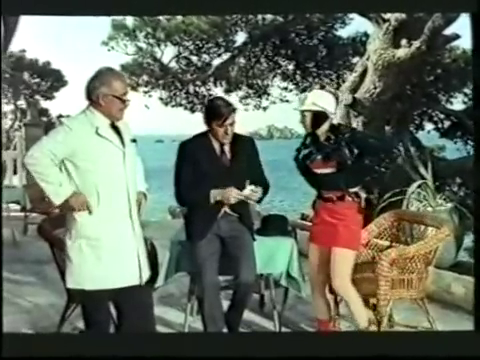




The Three Fantastic Supermen (1967)
Film review # 528
Director: Gianfranco Parolini
SYNOPSIS: FBI agent Brad hires two “supermen” who fight crime in their bullet-proof suits. The three of them join forces to become the “three fantastic supermen,” to investigate an evil plot concerning counterfeit money and bad guys turning people into precious jewels…
THOUGHTS/ANALYSIS: The Three Fantastic Supermen is a 1967 film. The film opens up with FBI agent Brad testing two superhero crimefighters, Tony and Nick, to see if they are up to joining forces. The two pass the test, and the three work together to investigate a counterfeit money ring and an evil scheme. The film is very much one of the many, many comedy spy films that parody the likes of James Bond-style films, and were especially in abundance in Italy at the time. It also has this superhero element too, with the characters dressing in skin-tight spandex and capes that serve as “bullet-proof suits.” The plot of the film is pretty standard for a spy film parody, but it at least has direction and some twists, with the somewhat uneasy alliance between the FBI and the two vigilante heroes leading to some conflict between them. The main aspect of the film is the comedy though, so everything is done in a silly, slapstick way. Any sense of peril is faced by Tony’s cheeky smile, and Nick’s expressive facial expressions and motion (accentuated by the fact he is mute). Things get even more silly when a machine that turns people into precious jewels gets introduced, as well as the machine eventually being able to clone people, but it also gets a bit sinister, when a class of schoolkids are kidnapped and nearly killed (the cloning machine works properly on children, but not adults apparently). Regardless, it’s a standard bit of comedy and parody, with plenty of scantily-clad women and chauvinism to appeal to its young male target audience.
The three main characters, Tony, Brad and Nick are different enough to make them distinguishable and interesting: as mentioned, Brad is the straight-laced FBI agent who has an uneasy alliance with the other two, although this typically ends with them playing practical jokes on him as he tries to get their secrets from them. Tony is the suave cheeky chap who laughs off any threats, and Nick as the expressive mute gives the scenes a different kind of energy. The supporting cast is a fairly typical bunch, with the evil criminal mastermind, the scientist, and his attractive daughter who serves as the love interest, so it’s unremarkable, but it has the staples of the films it is attempting to parody. The three “fantastic supermen” are also played by trained acrobats, so they can pull off some good stunts and performances, which again give the scenes a unique energy and appeal. There’s also plenty of props and variety in the scenes to make it feel busy and engaging, so while it’s a bit low budget and all over the place, it is still entertaining, although the music consisting of one of about three pieces of music played every other minute does get annoying quite fast. Overall though, The Three Fantastic Supermen is a very typical spy comedy of the time, with the added superhero element adding in a bit of a twist, and the acrobatics giving the stunts a bit more energy. It’s nothing too special or memorable, but it was apparently successful enough to warrant a number of sequels, which we will have to look at at some point…
-
#527 – A Nymphoid Barbarian in Dinosaur Hell (1990)






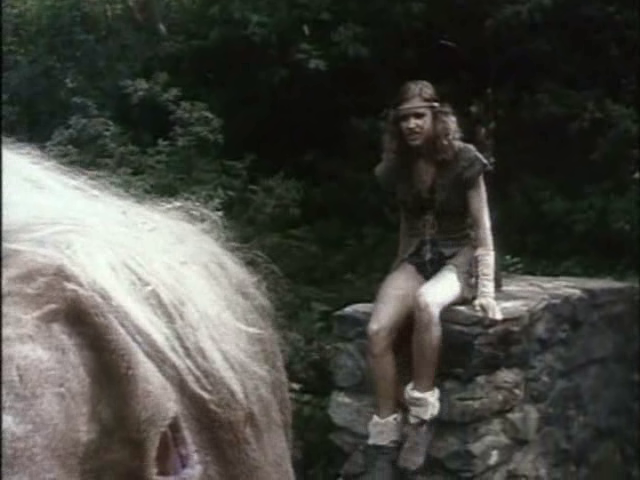

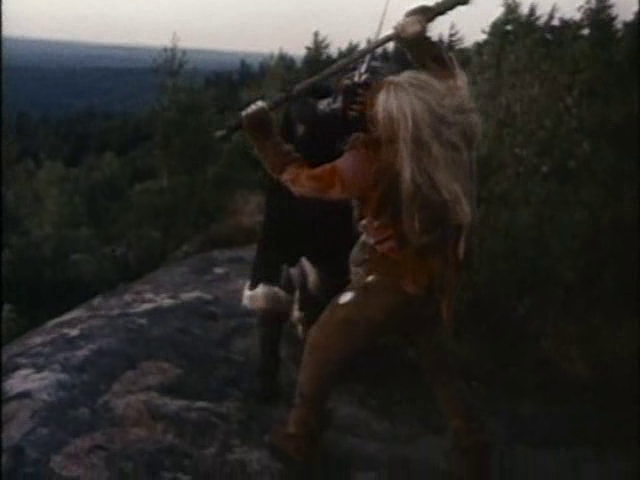

A Nymphoid Barbarian in Dinosaur Hell (1990)
Film review #527
Director: Brett Piper
SYNOPSIS: In a post-apocalyptic Earth, a young woman has to survive in a world infested with dinosaurs, mutants, and barbarians.
THOUGHTS/ANALYSIS: A Nymphoid Barbarian in Dinosaur Hell is a 1990 post-apocalyptic sci-fi film. The film opens up the same way as nearly every post-apocalyptic film does: with a montage of the world being essentially destroyed by nuclear war. What is left is a world filled with dinosaurs, mutants, lizard people…just a mish-mash of any and all typical things you’d find in other films. There’s not much rhyme or reason to the setting. The plot is…basically non-existent: there’s hardly any dialogue, any motivation, or any direction. With post-apocalyptic films you can definitely make the lack of dialogue or story work: in a world where society has collapsed, sometimes the only goal is to survive, and films like Mad Max 2, which also uses minimal dialogue and focuses on action, works extremely well. Here, that is not the case, as the action is sub-par and without any spectacle. The film just consists of some wandering about and scrappy fights, with a few stop-motion monsters as well. There’s no sense of character, world or development to maintain interest, and it certainly doesn’t live up to the hyped up title, which is probably the only reason anyone would be drawn to this film.
But we shouldn’t perhaps be so disparaging about the film because it was made by the company Troma; who are known for making low-budget sci-fi horror films that rely on comedy and satire to make fun of the genre. Even by Troma’s standards though, this is bad. This film just doesn’t have any amount of self-awareness or satire that would make you think it is poking fun at the genre: it’s just dull, and the lack of any substance means you really have no idea what to take from it. The title promises much, but delivers very little: there’s not really any dinosaurs, the barbarian isn’t a nymphoid (in fact nymphoid isn’t a word), and you’re not missing out on anything if you skip this film.
-
#526 – Sonic the Hedgehog (2022)


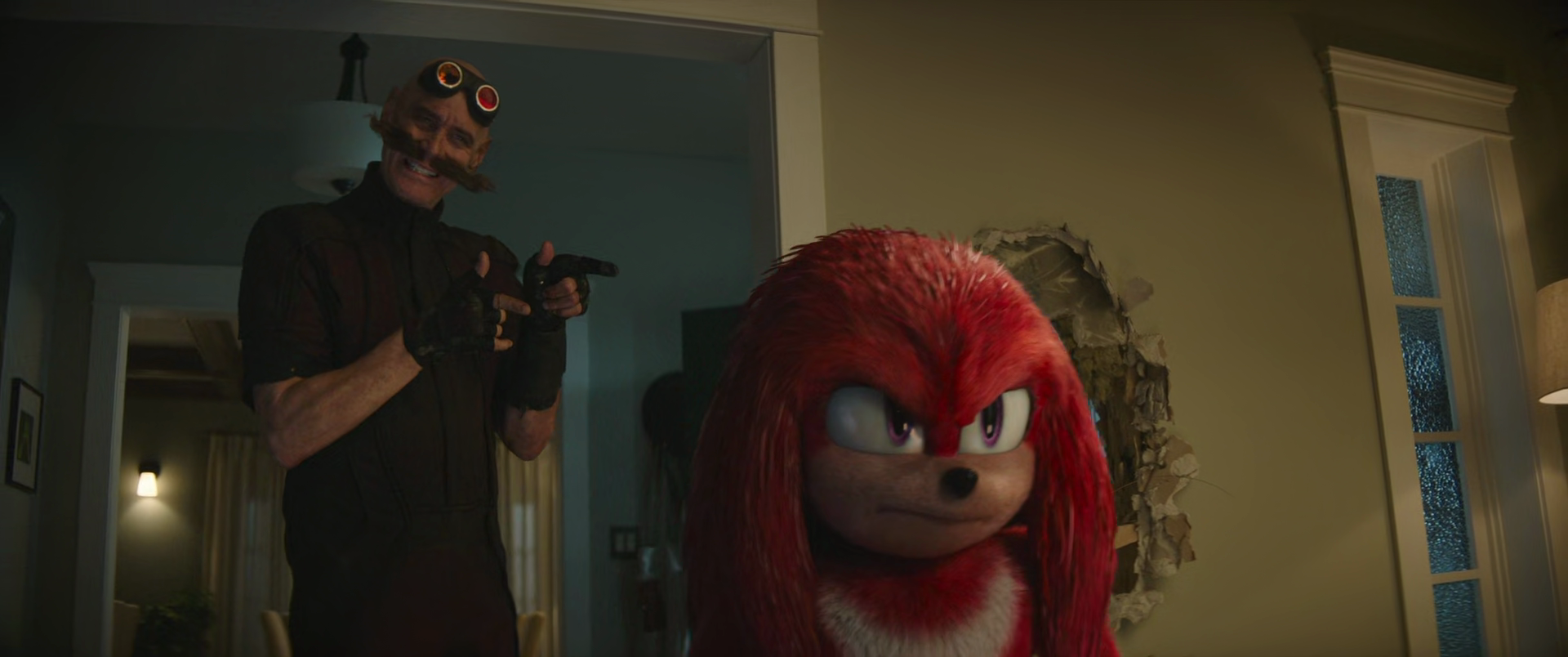





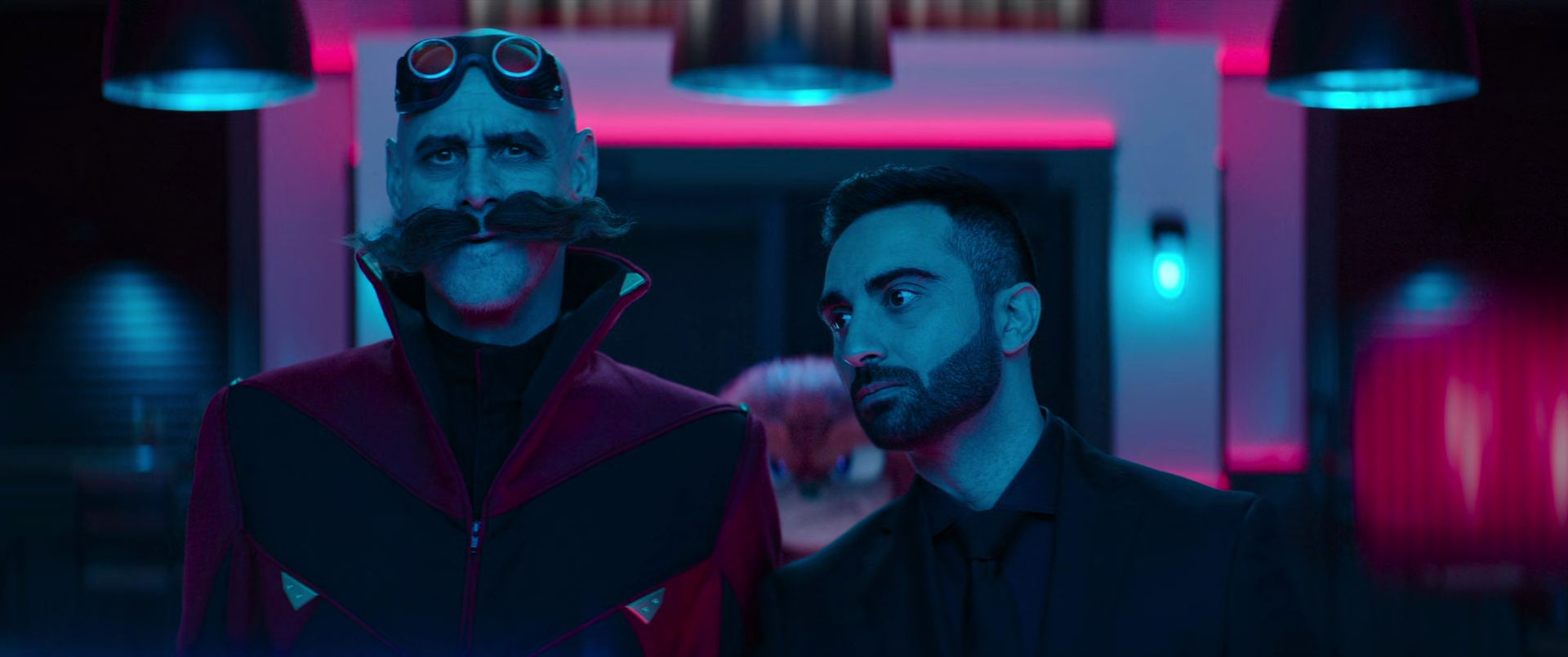
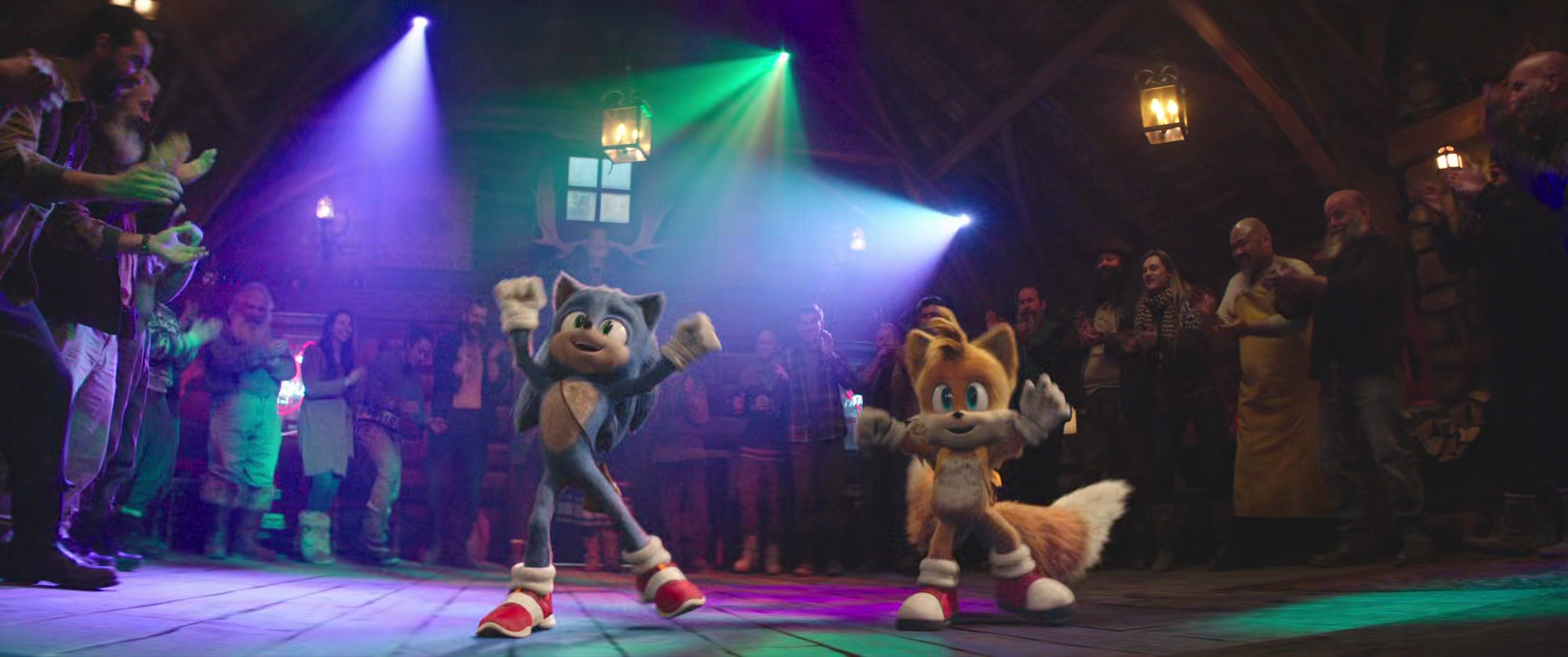

Sonic the Hedgehog 2 (2022)
Film review #526
Director: Jeff Fowler
SYNOPSIS: While Sonic the hedgehog struggles to be a hero on Earth, his nemesis Dr. Robotnik is making plans to return to Earth, helped by the mighty Knuckles the Echidna. Meanwhile, Sonic manages to get some help from Tails, a new friend who comes to warn Sonic of Robotnik’s return, and his quest to find the master emerald…
THOUGHTS/ANALYSIS: Sonic the Hedgehog 2 is a 2022 film, and the sequel to the 2020 film Sonic the Hedgehog. The film starts off with Sonic trying to use his powers for the best, and struggling to fit into the role of a hero. Meanwhile, Dr. Robotnik is trapped on a planet of mushrooms, looking for a way to get back to Earth and get his revenge. The story feels like one you would typically see in a sequel, with the characters being given new problems to overcome, and some attempt to develop their characters. It feels very similar to the first film, but that’s not necessarily a bad thing, as the first one was decent: nothing spectacular, but decent for its young target audience. However, I think the script could have done with another re-write or revision: the whole thing doesn’t really stick together very well, and the scenes feel disjointed, alongside the main plotline of the film getting lost through the mish-mash of scenes. The film does at least focuses on Sonic and his friends for most of it, and the story elements of the human characters is diminished, but this is what you want really. This also has the effect of having their story more self-contained and easier to follow than what Sonic and his friends are doing. At a runtime of two hours, the film could probably have been cut down easily by about fifteen to twenty minutes, and that is probably something that would have been achieved with another script re-write.
All of the characters from the original return, and have their own things to do. The introduction of Knuckles is a stand-out point, with Idris Elba voice the character and really making it his own. Probably the funniest moments in the film come from Knuckles and his over-serious nature. Jim Carrey brings the energy as Dr. Robotnik again, and Agent Stone is a good lackey for him. The introduction of Tails is a bit wobbly, and always feels like any explanation or development of his character is off-hand and implied. I think there should definitely have been more of a balance between the introduction of both Tails and Knuckles to properly flesh out both characters.
Overall, Sonic the Hedgehog 2 is a sequel that continues the work of its sequel without too much fanfare: it carries on the bits which worked and improves on them to some degree, while focusing less on the human characters (but even their scenes feel a bit more focused, even if they’re mostly just for the sake of comedy). It’s still aimed at a younger target audience, but it can still get a few laughs, especially when it relies on good old-fashioned comedy rather than making awkward references (although I’m sure the target audience will enjoy them still). There’s definitely some issues with the story not flowing and coming together, the long runtime, and the story of some characters not being integrated fully into the story, and as mentioned, I think most of these issues could have been addressed with another script re-write or revision. Nevertheless, its still an entertaining film for its target audience, and fits nicely alongside the first film.
-
#525 – The Flight that Disappeared (1961)

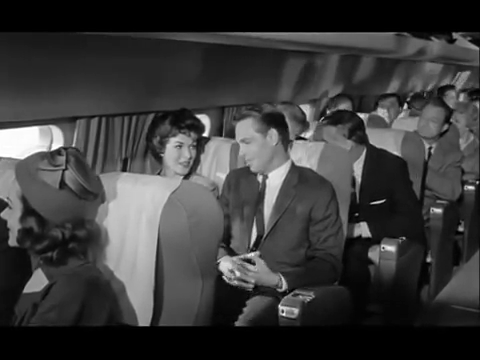








The Flight that Disappeared (1961)
Film review #525
Director: Reginald LeBorg
SYNOPSIS: A commercial flight to Washington D.C. starts to gain altitude uncontrollably, eventually losing contact with the ground. Among the passengers are three top scientists, who have been summoned to the Pentagon for a meeting, and eventually the only ones who are left conscious as the aircraft continues to ascend…
THOUGHTS/ANALYSIS: The Flight that Disappeared is a 1961 film. The plot concerns a commercial flight to Washington D.C. that continues to gain altitude as the pilots lose control and radio contact with the surface ceases. The build-up of the mystery is fairly interesting, and it certainly makes you wonder where it is all going: there’s no evidence of any sci-fi or extraordinary influences, so it does keep you guessing as to what is actually happening. The cast is introduced with enough detail to set the scene well, although what turn out to be the three main characters, the scientists, Dr. Carl Morris, Tom Endicott, and Marcia Paxton, aren’t very apparent until a good portion of the film, which again helps with the mystery, but also leaves the film a bit directionless. The three main characters are unknown to each other when they board, but learn that they are all there for the same reason: to attend a secret meeting at the Pentagon for the development of a new “beta bomb,” a weapon more powerful than the atom bomb. There’s a passenger on the plane who tries to talk to them individually, saying that they must use their weapon on enemy countries with a pre-emptive strike, but the scientists are insistent that it is a weapon to only be used in self-defense or retaliation. The plot, as you can probably tell, is rooted firmly in cold war era politics, although it doesn’t contribute to the mystery too much. While the film does a lot to set up the scene and the people aboard the flight, it is let down by the fact that there’s barely any personality between them, and nothing really happens in the first part of the film.
It turns out the three scientists have been summoned to a trial of sorts by the people of the future who have yet to be born, and probably will never be, if their weapon is allowed to be built and used. The film quickly jumps here from nothing happening, to a bit too much happening: we’re not given any set up for this whole trial and having to face people from the future, and it is all a bit sudden. I feel like the message gets increasingly muddled as well in this part, as the future not born people (whatever we are calling them…) accuse the scientists of being guilty because they conceived the idea of these weapons, and despite opposing their use in anything other than self defense. Is the film’s message essentially seems to be that having a bad idea makes you guilty, whereas the person or politician that uses it is simply a bureaucrat following orders and ticking boxes. There’s something about the whole message here that seems a bit off. I appreciate that the film does look at the moral quandaries it raises with a good amount of depth, but the overall conclusion just seems a bit weird; holding oneself morally accountable to people that have not or may never be born just seems a bit misguided to me.
Despite the film being an independent production, it is made quite well: the airplane where most of the film is set is a set, but it is pretty convincing and accurate. Overall, The Flight that Disappeared has an interesting mystery, but is bogged down by dull characters, and slow pacing at the beginning. The resolution and messaging is also muddled, but it does at least explore it’s subject in some depth. It probably would have been at home as an episode of The Twilight Zone, and certainly fits that tradition of 60′s science-fiction.
-
#523 – The Tunnel (1935)




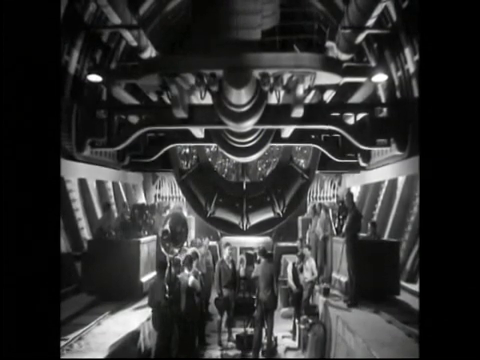
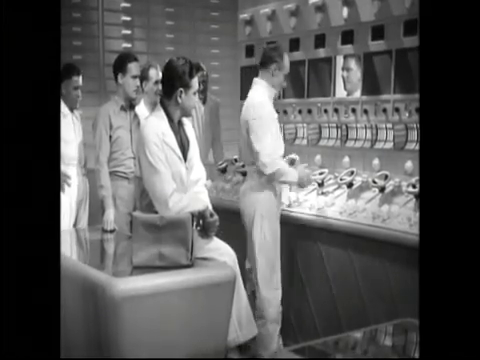

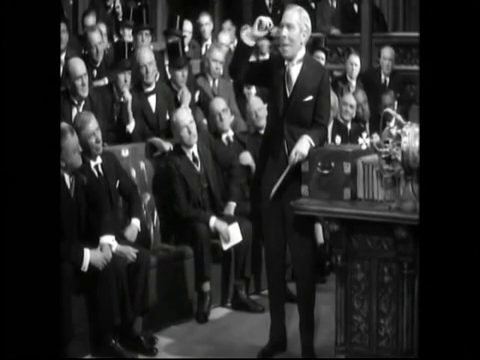


The Tunnel (1935)
Film review #523
Director: Maurice Elvey
SYNOPSIS: Richard McAllan is an engineer who has a dream to build a tunnel between England and the United States. He convinces a group of billionaires including Lloyd, the world’s richest man, to fund the project, but there are many other problems that present themselves on the way to the projects completion, both in terms of McAllan’s private life, and those looking to profit from the tunnel’s failure…
THOUGHTS/ANALYSIS: The Tunnel (released as Transatlantic Tunnel in the U.S.) is a 1935 science-fiction film based on the novel Der Tunnel by Bernhard Kellermann. The film opens up with an orchestra performing for a select group of billionaires at the home of Lloyd, the richest man in the world. Engineer Richard McAllan is also there, to propose the construction of a tunnel underneath the Atlantic Ocean, connecting England and the United States. After much persuading, he manages to get their support, and work on the most ambitious project in human history begins. The plot of the film goes through all the drama and problems that would be associated with such a project, and splits its time between looking at the tunnel itself and the logistical problems, and also how the project impacts McAllan and his relationships with those around him. The balance between the two is well executed, and everything flows and connects nicely. There are a few changes from the novel and the 1915 film version, but they are mostly minor. The setting seems to be a near-future setting, where the Channel Tunnel was completed in 1940, so it’s a different vision of the future rather than what was actually happening in 1940 in Europe.
The tone of the film is very uplifting and optimistic, and McAllan is presented as an idealist who wants to use this project to change the world for the better. We also see political leaders in the U.S. and U.K. similarly making speeches in the U.K. parliament and U.S. congress to this effect. The film stands out in two respects: First, the acting is pretty good for the era, and the emotional scenes are delivered very well. The dated romance stuff and traditional roles still feel dated, but when the film needs to convey more raw emotion, it does so very convincingly; more so than any other film I’ve seen of the era. The cast isn’t too varied, but everyone has a specific role to play, and you get a good sense of what they’re there for.
The second stand out part of this film is the sets and design: you really get a sense of the tunnel’s massive scale in these large sets full of machinery, filled with crowds of men digging. The Tunnel is actually the third incarnation of the film released over two years, with the German and French versions released first, and the English version released after. Each version uses the same sets and mostly the same script, but changes the actors for the different languages (this was before dubbing was a thing). As such, the sets were probably meant to last. The English version also has a different director, which means it deviates a little more from the other two. Perhaps the big difference between the film and the novel is that the film presents a more evenly optimistic tone; and that the end justifies the struggle of the development of the tunnel. The novel focuses much more on the hardships though, and McAllan (Mac Allan in the original German) becomes a worldwide reviled figure. The ending is also a high note, marking the completion of the tunnel and new prosperity for “the English speaking world,” but we never see how this takes shape, but since the film is about the construction and completion of the tunnel, and dealing with it’s consequences would probably dilute that focus. The novel does look a little closer at the effects of the tunnel’s completion, but it’s not entirely optimistic: the tunnel is already shown to be updated (the completion of the tunnel takes a lot of years to finally complete, and by then, it had already become obsolete, as airplanes were now able to carry people across the Atlantic faster than travelling through the tunnel. With regards to this film version of The Tunnel, it has some very strong points in both the acting and the design, and really brings the story to life in this regard. Some parts are a bit predictable and rooted in the old-fashioned values of the day, but there’s enough to make it an interesting watch if you like the films of this era.
-
#522 – The Tunnel (1915)








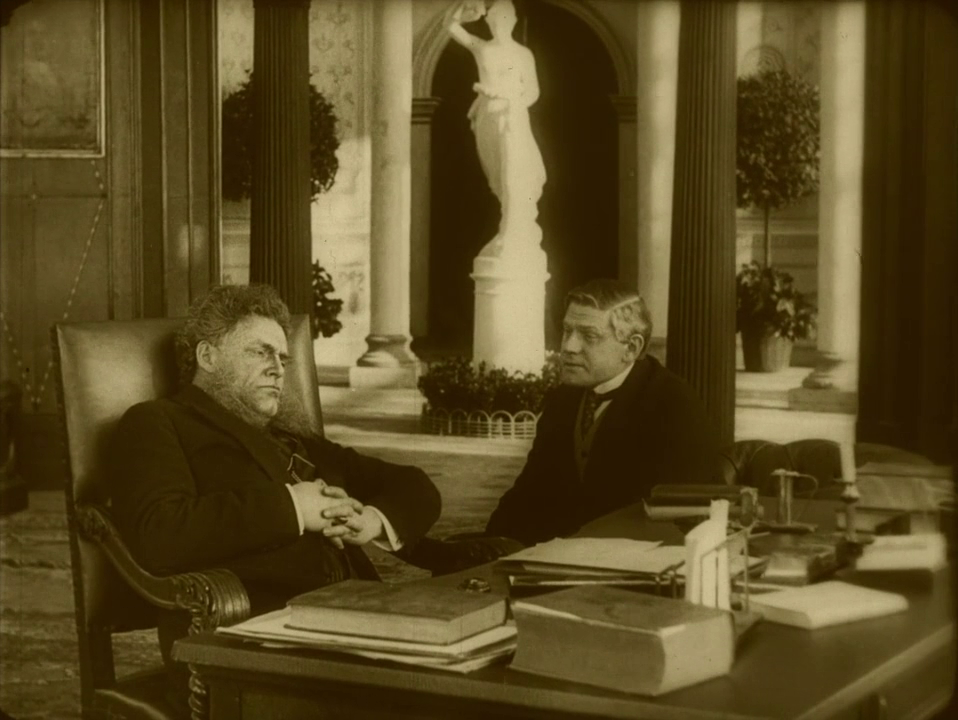


The Tunnel (1915)
Film review #522
Director: William Wauer
SYNOPSIS: Max Allan is an engineer who has the vision of building an underground tunnel that connects Europe and America. He convinces the world’s richest men to fund his venture, including Lloyd, the world’s richest man. However, there are those that do not want to see the project succeed, and will do anything to prevent it’s completion. This, and a number of setbacks, make it difficult for Max to fulfil his vision…
THOUGHTS/ANALYSIS: The Tunnel is a 1915 film based on the novel of the same name by Bernhard Kellerman. The story centres around the vision of engineer Max Allan, who wants to construct an underground tunnel between America and Europe under the Atlantic Ocean. The story of the film is fairly simple: it’s less of a traditional story centred around the characters and a plot, but more so focuses on a vision for the future and what such a project would look like. It was probably a vision of hope in a world in the midst of the first world war. Max has to persuade the billionaires of the world to fund his project, so arranges a meeting in New York to persuade them, giving an opportunity for the film to make it’s point to the billionaires as well as the audience. Being a silent film, there’s not too much room to create engaging dialogue or complex set-ups, but even in the context of the silent film era, this film feels very basic and minimal: the interstitial text describes what is going to happen in the next scene, and then it happens. It’s very literal, and as the text already has described what is going to happen, there’s little room for surprise or interest to develop.
The film does a good job of exploring the issues that would surround the making of such a project: it is described as taking nearly twenty five years to complete, which even then, that might be described as ambitious. There’s lots of footage used of masses of men hard at work digging the tunnels, and this really gives a good sense of the scope of the project. I’m not sure if the footage was shot specifically for the film, but it fits in well. There’s also a balance between the problems that the workers face, and the problems that Max faces on a personal level, and even though the characters aren’t really fleshed out in any way, you still get a sense of the problems they are facing.
The Tunnel is a vision of hope for what humanity can achieve. The ending text describes how when the tunnel was finished it brought about peace and prosperity for all: that might be a bit too simple of an ending, but it’s definitely the message that the film is going for. Specifically, the issue of people being scared of technological progress will certainly make enemies of those still rooted in tradition, but that should not stop people with a vision. As you might expect, there’s a few instances of problematic portrayals of non-white/European people and cultures, but these are limited. Though the film is dated and is not very entertaining, it does have a message regarding progress that is still relevant, and only for that reason it would be worth a watch.
-
#521 – 6 Hours to Live (1932)



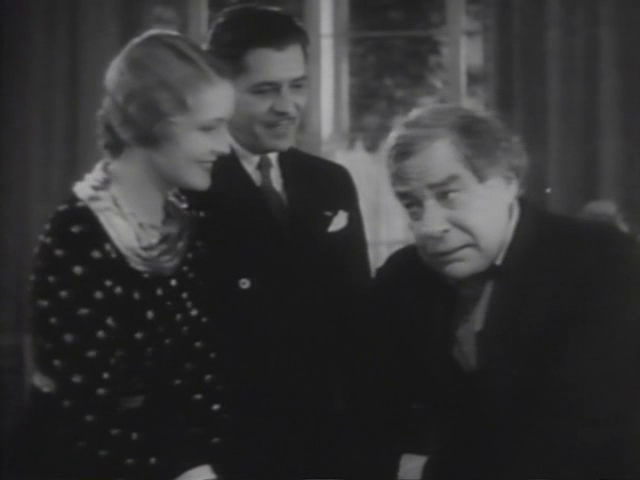






6 Hours to Live (1932)
Film review #521
Director:
SYNOPSIS: World diplomats have convened at a special assembly to agree on a new global trade deal that requires unanimous approval from all countries. The only country that is opposed to it is Silveria, whose representative Paul Onslow believes it is only his country which will suffer form it. When Paul is murdered, Professor Otto Bauer uses his experimental invention to bring him back to life, so Paul can identify his murderer and be present at the final vote of the trade deal. However, the experiment only allows him to live six more hours, so he must wrap up all his business in that time…
THOUGHTS/ANALYSIS: 6 Hours to Live is a 1932 drama/sci-fi film, based on the story “Auf weidersehen” by Morton Barteaux. The film centres around a meeting of representatives from every country in the world, as they have convened to agree on a new global trade deal. The deal requires unanimous approval from every country, and the only country refusing to sign is Silveria, represented by Captain Paul Onslow, who believes the deal is bad for his country. This, naturally, has made him many enemies, and an attempt on his life is made after he leaves the conference. While he is in hiding, he realises he is in love with Baroness Valerie von Sturm, who his friend Karl Kranz is in love with, setting up a love triangle of sorts. Unfortunately, Onslow is killed in another attempt on his life, but Professor Otto Bauer’s latest experiment is able to bring him back to life. Unfortunately, it can only do so once for six hours, so Onslow has to find his murderer, deal with his affairs, and go to vote on the trade deal all before he dies for the second and final time. The story is primarily a drama; partly political, partly romance, and as such, there is a lot of dialogue to get through, and many of the scenes are just talking. A lot seems to happen to Onslow in one day, with him realising he is love, having two attempts on his life, and having to vote on this trade deal: with all these things going on, you’d think the film would be packed full of things, but as mentioned, the talking really takes over the majority of the scenes. I feel like more could have been done to set the scene of the film: the politics of this trade deal are left really unexplored, and we don’t know the details, and we are left to experience what feels like an entire relationship between Onslow and the Baroness in the span of one day. It’s easy to pick up and understand, but some exposition would have helped, like why the fictional country of Silveria is the only country in the world not to benefit from this supposed deal, and why he is holding out against it; since the representative who would fill in for him if he was absent also seems to want to vote for it. Him being against everyone else almost makes him seem like a villain, as we have no real knowledge of his motivations, over than “love of his country.” which could mean anything.
So when Onslow is brought back to life for six hours, it makes things a bit more interesting: he has to confront his murderer, vote against the treaty, and deal with his personal affairs all before his time runs out. Given only that a few people know of what has happened, he is able to mostly carry on like nothing has happened, and uses that to end his relationship with the Baroness and to force her to move on, as she is unaware that he is about to die (again), and that will be easier for her to accept. While you might think that returning from the dead would be a shocking and harrowing experience knowing you’re about to die again, Onslow is very serene and tranquil about the whole thing, and his “experience” of death has left him unafraid of what is to come. Instead of hurrying about, he revisits some people he met during the day, to comfort them and aid their troubles. He becomes almost an angelic figure, and I think the leaving of many things ambiguous is intentional to give it that mysterious feel and to keep the mystery of death intact. It almost feels like Onslow is meant to have a change of character when he was revived into this caring, empathic individual, but his personality was more or less like that to begin with, which doesn’t have the impact of something like Ebenzer Scrooge’s change of heart in “A Christmas Carol.” while the premise is interesting, it eventually falls into a very typical message of “science not going too far, and that some things should be left to God.” which crops up a lot in films of this era. Also, the whole reveal of the murderer at the end is anticlimactic, as it turns out to be someone who was only briefly seen at the start of the film, and plays no part whatsoever in anything. The scene where Onslow visits a prostitute to comfort her is a good one with some uplifting and genuine dialogue, but on the whole it is a very mixed bag.
Overall, 6 Hours to Live has an interesting premise, and provides some dramatic scenes, but some parts (particularly the romance and the dichotomy of science vs God) feels very much of it’s time. The acting carries the drama very well for the most part, but being very dialogue-heavy, it is not going to appeal to everyone. there’s definitely areas to improve in the film, but it still has some good points that keep the film together.
-
#520 – Lôi Báo (2017)






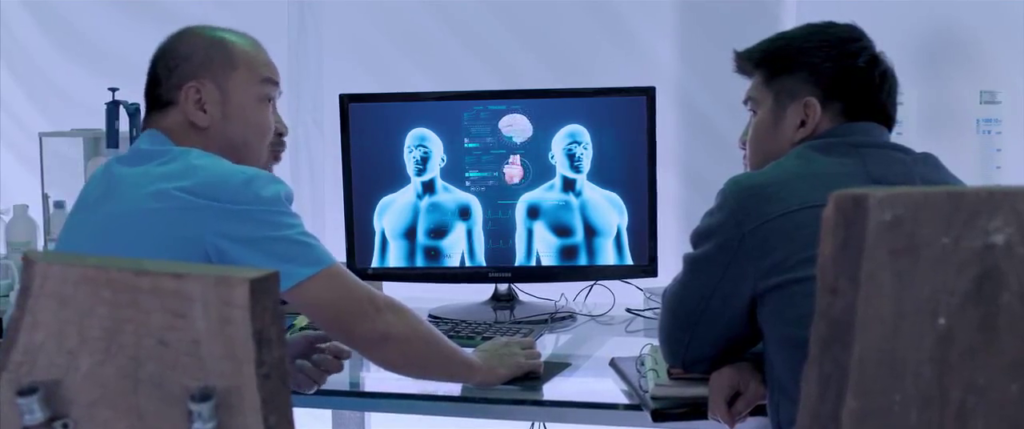


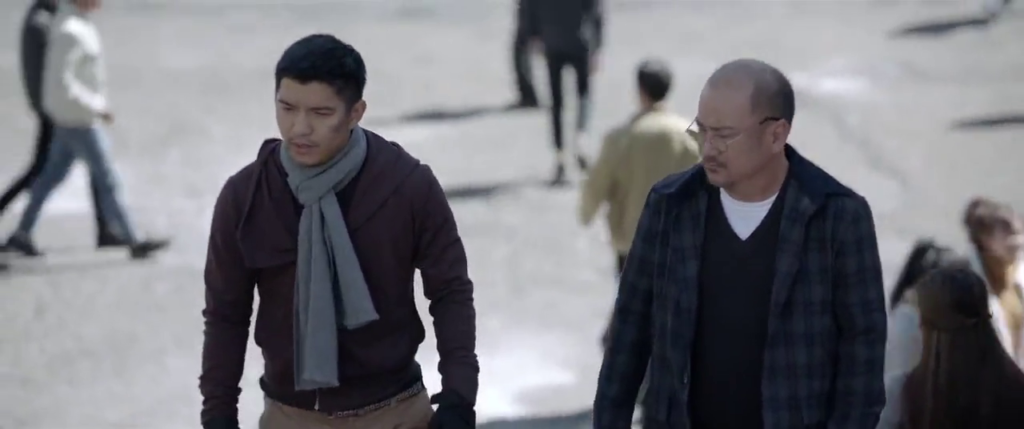
Lôi Báo (2017)
Film review #520
Director: Victor Vu
SYNOPSIS: Tam is a comic book artist who is working to finish his next big superhero project. His work has left him neglecting his health, and when he finally visits a doctor about a cough, he discovers he has terminal lung cancer. Tam visits a family friend, uncle Ma, who reveals that he has been working on a secret project to transplant heads onto other bodies. Although initially reluctant, Tam eventually agrees to undergo the procedure, using a body that Ma found in the woods. The operation is successful, but it seems to have come with a side effect: he has acquired lightning-fast reaction times, fighting skills and super strength, making him a real-life superhero. however, these newfound powers begin to cause trouble for himself and his family, and the attention of a criminal gang…
THOUGHTS/ANALYSIS: Lôi Báo is a 2017 science-fiction superhero film. The film centres around Tam, who is a comic artist working on his next big superhero project. He has been neglecting his health though, and when he goes to a doctor, he finds the persistent cough he has is actually terminal lung cancer. Family friend Uncle Ma reveals he has been working in secret on head transplants, and that he could save Tam’s life by transplanting his head onto another body. Tam is initially reluctant, but eventually agrees, and using a body the two find in a forest, Tam successfully undergoes the procedure. However, this seems to have the side-effect of giving Tam super powers, turning him into a real-life super hero, but this also comes with it’s downsides, as his new body has a bit of a life of it’s own, putting a strain on Tam’s relationship with his family and others. The film is a first attempt by the Vietnamese film industry at a superhero blockbuster film in the style of the Marvel/DC films, and it has a lot of the plot staples assembled. The main character is fleshed out in terms of his relationships and what he is going through, but it often feels like everything that goes on around him is just a mashup of superhero tropes without developing into anything really unique. When the film tries to tie everything together in the third act, it ties everything together: every character and disparate thing is revealed to be a part of some big plan and criminal organisation. Even in this, it just feels like everything is just lumped together, and gives the film no spontaneity. The twists that the film presents are fairly predictable, leaving very little room for the film to actually do anything purposeful.
The tone for the film is very odd: at some points it gets very dark, such as when Tam finds out he is dying, and attempts to kill himself. Other times it tries to be light and a bit silly, in particular with Tam’s young son, whose jokes about his own obesity don’t really hit the mark, and don’t really apply to anything. Tam’s relationship with his wife provides a high source of drama, particularly when his new body was previously involved with another woman who he meets, forming a love triangle, but even this is very surface level, and plays out exactly as you’d expect. With regards to Tam’s superpowers, they are also very inconsistent: he has faster reaction times, but also sometimes super strength as well, and how he actually got his new powers from his body is also vaguely explained.
Where the film does excel in it’s action sequences: the fist fighting is nicely choreographed and has some silly, but very high energy fights and stunts, which are fun to watch; it’s just a shame there’s so few of them. On the special effects side, the CGI isn’t particularly great, which drags the film down again, but when it just does some good old-fashioned martial arts, it’s alright. Overall though, Lôi Báo is a fairly lacklustre superhero film that takes many superhero tropes and fails to innovate or join them together in a stand-out central character. There’s a effort to fit a lot of story and a myriad of drama in here, but though it tries to connect everything together, does so in a way that is predictable and isn’t particularly satisfying.
-
#519 – Rawhead Rex (1986)



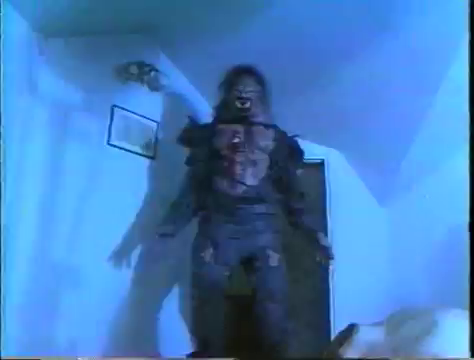
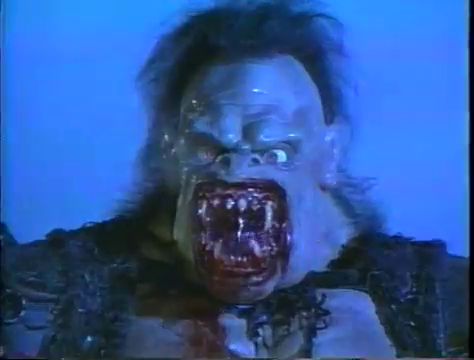





Rawhead Rex (1986)
Film review #519
Director: George Pavlou
SYNOPSIS: Howard Hallenbeck has taken his family on a trip to rural Ireland to do some research for a new book about the pagan deities of the area. Unfortunately, while he is there, the very kind of monster he is researching is released from it’s prison, and goes on a murderous killing spree. It becomes a race against time to stop the monster before everyone in the small town is slaughtered…
THOUGHTS/ANALYSIS: Rawhead Rex is a 1986 horror film, based on the short story of the same name by Clive Barker. The story centres around Howard Hallenbeck, who is visiting a rural town in Ireland with his wife and two children to research ancient folklore there for a new book he is writing. If this sounds like the opening plot to countless horror films, then you are spot on. you can also extend this to the rest of the film, as the whole experience feels very familiar and formulaic. Basically, an ancient demon is released from it’s prison and starts killing people in the village, leaving the authorities and the main cast to figure out what is going on. The plot unfolds very predictably: the monster kills, the cast try and figure out what goes on, and there’s very few surprises. Most of the kills are characters that haven’t been established or introduced properly, so there’s little investment in what happens to them. The lore behind the monster is never gone into in any real detail, and the occasional bit of gore and one brief bit of nudity just don’t leave any impact, nor do they escalate or build towards anything. The film feels like it has the fundamental building blocks, but never builds upo0n them, nor draws them together.
The monster, Rawhead, is based on a fictitious monster of the same name, but apart from said name, there doesn’t seem to be any real connection between the two. As mentioned, there could have been a lot more done with building the lore and have it impact the plot, but it essentially boils down to a mixture of paganism vs Christianity that offers little insight into either. Rawhead’s design is probably the thing that will ultimately make a viewer not take this film seriously: it is a pretty silly rubber mask which no real prosthetics or moving parts, and it never seems convincing. It also never seems too threatening either, since no one ever really has a chance to fight it, and just surprises people who can’t fight back, so we can’t really gauge it’s strength and ferocity. This is also true in the ending, in which the monster is simply resealed by a stone…thing, and the big twist is that a woman needed to use it (?), resulting in a climax which is just a bunch of CG chain things flying about and slowly imprisoning the monster. Again, there’s no real face off with the monster, so we don’t get a sense of it’s power and why we should fear it.
Other than the bare plot and monster design, the acting is for the most part fine, but there are a number of slip-ups, particularly with the accents, which you will undoubtedly notice at least once or twice. Apart from that, everything else is fine, just bland and unoriginal. Clive Barker, the writer of the original short story and the screenplay version, did not like the outcome of the film (unsurprisingly), and so took more control over the next film he wrote: which was the very successful Hellraiser. If you’re interested in Barker’s filmography, maybe you could give this a watch, but it has no other distinguishing features to mention.



